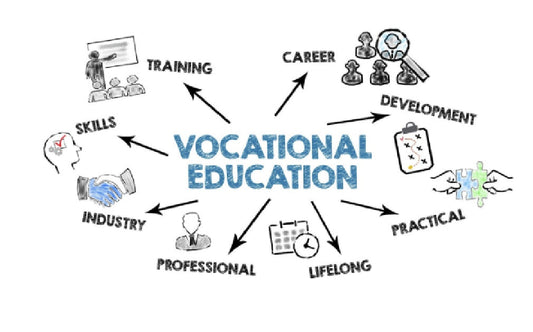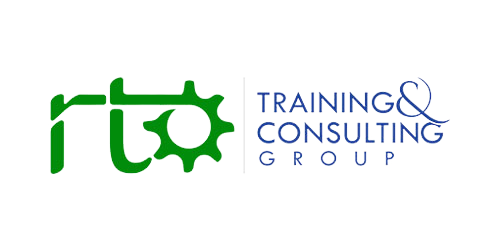Across the globe in 2025, artificial intelligence has moved from novelty to necessity. The change is nowhere more visible than in education, where early instincts to ban or police generative tools are giving way to a more pragmatic reality: students and educators will use AI, so systems must teach it, steer it, and set guardrails around it. Still, the way countries are making that shift diverges sharply. China’s approach is centralised and compulsory, knitting AI literacy into the fabric of schooling. The United States and much of the West favour a looser, voluntary model that leaves enormous room for local variation. Australia sits somewhere in the middle—anxious yet inquisitive, with policy signals that recognise the need for responsible adoption but a public that remains among the world’s most sceptical. Understanding these different paths isn’t just a matter of policy semantics; it offers a map for what effective, ethical AI education could look like in a fast-changing world.
The global pivot: from suspicion to literacy
Two years ago, many universities and schools across the world treated generative AI mainly as an integrity threat, and some institutions flirted with outright bans. In 2025, the emphasis has shifted to literacy, accountability and outcomes. National and state education agencies in the United States now provide guidance to fund the responsible use of AI in instruction, tutoring, and data-informed student support, while England’s Department for Education has published policy papers and practical materials to help teachers use AI safely and effectively. The direction of travel is clear: integrate AI where it adds demonstrable value, teach students how to use it well, and build systems that protect privacy and academic honesty.
That pragmatic turn mirrors a broader change in public debate. The 2025 Stanford AI Index reports growing global optimism about AI’s benefits—but with deep regional divides. Large majorities in countries like China now say AI products and services bring more benefits than drawbacks; minorities say the same in the United States and parts of Western Europe. This is the context within which education ministries and universities are recalibrating: there is momentum to use AI for learning, but trust gaps and equity concerns remain vivid and must be addressed in any workable model.
China’s model: mandate the basics, normalise the tools
China has taken a resolutely centralised approach. In 2025, Beijing mandated AI education across all schools—from primary to senior secondary—embedding required AI coursework within the core curriculum. The city’s education authorities specify a minimum number of annual class hours and frame AI competency as foundational, not optional. This comes alongside national “AI+ education” reforms and an explicit push to cultivate advanced digital skills at every level of the system. In policy terms, AI literacy is treated like reading, writing, and mathematics: every student must learn it.
The mandate lands in a society that is unusually enthusiastic about AI. Surveys compiled in the 2025 AI Index and other opinion studies show consistently higher optimism in China than in English-speaking countries. That cultural tailwind matters for classrooms: the public generally wants the technology to succeed, and schools are encouraged to help students build mastery rather than simply avoid misuse. The same research shows the United States and Britain trail on measures of optimism, underscoring why their education systems often move more cautiously.
China’s universities are also making access concrete. Since the turn of the year, dozens of institutions have launched courses built around the home-grown DeepSeek family of models, and many campuses have begun local deployments so students can authenticate with an ID and use high-capacity versions on university infrastructure. Zhejiang University, Renmin University, Shanghai Jiao Tong University, and others have publicised deployments or coursework centred on DeepSeek—part of a wider state-backed push to knit sovereign AI capability into teaching, research and campus operations. In some provinces, education networks are even pooling compute to provide shared back-ends across multiple institutions.
That zeal comes with guardrails. Local authorities have also moved to curb the unsupervised use of generative tools by younger schoolchildren, signalling that “AI everywhere” does not mean “AI without limits.” The policy mix—mandatory literacy, institutional access, and age-appropriate limits—reflects a system that sees AI proficiency as a national capability, shapes behaviours through top-down directives, and supplies infrastructure to make adoption real rather than rhetorical.
The United States: voluntary mechanics, uneven momentum
In the United States, federal leadership has nudged the system toward responsible adoption without imposing a national curriculum. A spring 2025 executive action set the tone by instructing the Education Secretary to clarify how schools can use federal grants for AI-enabled improvements. The Department of Education followed with a Dear Colleague Letter explaining how grantees can legally fund AI use across tutoring, instructional resources and student support—paired with a growing library of Office of Educational Technology guidance for developers and educators. That is the hallmark of the American approach: permissive, enabling policy that signals priorities while leaving implementation to states, districts and campuses.
The practical result is a patchwork. More than half of U.S. states have issued their own K-12 AI guidance, but the scope and ambition vary. Some districts invest in AI labs and teacher training; others pilot small-scale tools or wait for clearer evidence of impact. In parallel, the long-running AI4K12 initiative—jointly supported by AAAI and CSTA—continues to popularise a “Five Big Ideas” framework for AI literacy, anchoring what students should understand from primary years through high school. These voluntary frameworks provide a common language, but uptake depends on local leadership and budgets, so access and quality remain uneven.
Higher education illustrates the same dynamic of bottom-up adoption. In 2025, major AI labs began courting universities directly: OpenAI offered time-limited free ChatGPT Plus access to U.S. and Canadian students, while Anthropic launched “Claude for Education” with campus-wide agreements at Northeastern University, the London School of Economics and others. The net effect is that many students can now use premium generative tools at no cost to them, but primarily where their institution opted in—again reinforcing the American preference for institution-led integration over national mandate.
Public attitudes help explain the caution. U.S. optimism about AI lags well behind China’s, and many parents, educators and students worry about academic integrity, bias, surveillance and job displacement. Policymakers are trying to thread the needle: encourage productive use, fund evidence-building, and emphasise human-in-the-loop design, while preserving local choice. It is an approach tailor-made for a federal system, but it accepts a trade-off—speed and equity are harder to guarantee when adoption depends on geography and institutional appetite.
The United Kingdom: central guidance, local stewardship
England offers a Western variant on the decentralised path, with stronger central guidance. The Department for Education has published policy papers on generative AI in education and released extensive support materials for teachers and leaders—training modules, case studies, and leadership guidance designed to demystify practical use and mitigate risk. Alongside that policy work, schools are experimenting with classroom applications and accessibility tools, and ministers have publicly linked AI adoption to inclusion objectives, especially for learners who benefit from personalised support. Yet, as in the U.S., the final shape of AI in classrooms is decided by trusts, local authorities and schools, so enthusiasm and capacity vary.
Australia: a sceptical public, a sector hungry for clarity
Australia’s system shares the West’s decentralised DNA but adds a distinctive public mood. On many measures, Australians are enthusiastic users and practical experimenters—but trust and confidence lag global averages. A 2025 University of Melbourne/KPMG study found that about half of Australians use AI regularly, yet only around a third say they trust it, and large majorities want clearer regulation and stronger action against misinformation. For education decision-makers, that sentiment demands a double promise: evidence that AI lifts outcomes and a framework that protects students, teachers and communities.
Against that background, progress is incremental but tangible. States and sectors are piloting tools to reduce teacher workload and scaffold responsible student use; several systems are testing AI assistants that handle routine administrative tasks so teachers can focus on pedagogy and pastoral care. The policy centre of gravity is moving toward explicit, teachable AI literacy—spanning safety, ethics, critical use and basic promptcraft—rather than blanket bans that are neither enforceable nor educational. Australia’s opportunity lies in marrying that instructional clarity with the sector’s traditional strengths in competency-based learning and workplace-integrated assessment.
A tale of two philosophies
The differences come into focus when we compare the philosophical underpinnings of China’s approach with the Western model. In China, AI literacy is a nation-building project, delivered through mandate and capacity provision. The logic is that public enthusiasm and uniform access will accelerate mastery and fuel economic upgrading. In the United States, Britain and Australia, AI literacy is a professional practice to be designed locally within a set of principles. The logic is that proximity to learners and educators will produce more context-sensitive, trustworthy use.
Culture and governance shape these choices. Chinese public opinion is broadly favourable; policy can move quickly from edict to classroom. In the U.S. and Australia, survey data show mixed sentiment and a sharper politics of risk, so policymakers tend to favour guidance over compulsion, and schools pilot and iterate their way to scale. Neither philosophy is inherently superior; each carries trade-offs. Mandates accelerate access but risk over-centralisation. Voluntarism encourages local fit but can entrench inequity if resourcing and expertise are uneven.
Infrastructure as policy: who pays, who builds, who decides?
One under-appreciated variable is infrastructure. In China, universities are provisioning local compute and deploying campus-hosted models like DeepSeek so students can work without commercial restrictions or throttling. That choice—build capacity close to learners—reduces friction and sends a strong signal that using AI is a core competency of academic life. In the U.S., capacity frequently arrives via vendor partnerships, with institutions choosing between enterprise tiers, data-handling promises and new educational modes such as Claude’s “learning mode.” Both tracks can work; the decisive factor is whether institutions can match the infrastructure to robust professional learning, clear usage policies and transparent data governance.
Academic integrity, re-imagined
A striking change in 2025 is how universities are reframing integrity. Chinese campuses have largely moved from suspicion to supervised use, weaving explicit AI guidance into course design, with educators teaching prompt strategies, critique, and verification as part of scholarly method. A recent wave of university policy and practice reports in China describes AI as an “instructor, secretary and devil’s advocate”—useful, provided the human leads. In the West, the same message is ascendant, but unevenly realised; fears of shortcutting learning persist, and a cottage industry has grown around unreliable “AI detection,” which can inadvertently penalise students and undermine trust. The most promising models on both sides emphasise transparent attribution, iterative assessment, and oral or practical demonstrations that check genuine understanding.
The student experience brings this to life. Consider the story—now common—of a law student who, two years ago, was warned off AI and relied on mirror sites to access banned tools. Today, the same student is encouraged to use campus-approved models for literature reviews, drafting and argument mapping—within explicit rules that stress judgment and ethics. The lesson is not that integrity no longer matters; it is that integrity must be taught for an AI era, not asserted against it.
What schools and systems are actually doing
Across contexts, the most credible implementations share family resemblances. First, they treat AI literacy as multilayered: safety and ethics; critical evaluation; productive, guided use; and awareness of limitations and bias. Second, they link tools to pedagogy—replacing one-off “AI activities” with course-embedded tasks where students must explain, test, and improve AI outputs. Third, they use AI to lift institutional friction: scheduling, triage, messaging, and basic help-desk support, freeing staff to do the human work of teaching and care. Fourth, they publish guardrails in plain language so students, families, and staff know what is allowed, what is assessed, and what is off-limits. England’s training modules and the United States’ federal guidance both aim at this kind of practical clarity.
Chinese universities add two further elements: universal access via local deployments and sovereign-model familiarity as a graduate attribute. Campuses publicise the availability of “full” model versions on intranets, teach students how to interrogate outputs in Chinese and English, and integrate domain-specific knowledge bases for research and capstone projects. The result is a sense that AI competence is not a luxury add-on but part of being a modern professional.
Equity, risk and the environment
Any serious reckoning with AI in education must confront risks, not just opportunities. Equity looms large: if access to premium tools depends on institutional wealth or postcode, AI literacy will mirror existing inequalities. That risk is acute in decentralised systems and present, though mitigated, in centralised ones. Data governance and privacy are equally important; policies must state clearly what data are collected, how they are used, and where they are stored. Finally, the environmental footprint of computing cannot be ignored. Policy should favour efficient models for most educational workflows and use energy-intensive systems sparingly, while demanding transparency about hosting and sustainability. Those themes recur across official guidance in the U.S., the U.K., and Singapore’s workforce programmes.
Australia’s to-do list: clarity, capability, confidence
For Australia, the way forward is not to copy and paste another nation’s blueprint but to synthesise what works. The public wants clearer rules and trustworthy use. Educators want proven ways to save time and lift learning. Employers want graduates who can work fluently with AI systems. That means four practical moves.
First, make AI literacy explicit across the curriculum, not an optional club. Teach safety and ethics, yes—but also critique, sense-checking, and productive prompting tied to real assessment. Second, build professional learning at scale so teachers can adopt tools confidently. Third, invest in equitable access: state-level agreements or sector-wide platforms can reduce postcode lotteries and ensure that students in remote and regional settings have the same opportunities as those in major cities. Fourth, publish plain-English guardrails and exemplars so students and parents know what “good use” looks like. These steps do not require a single monolithic platform; they require common direction, practical resources and the courage to move beyond pilot purgatory.
What Australia can learn from the contrasts
From China: mandate the basics. Not every country will (or should) require AI classes in every school, but the principle—that baseline AI literacy is part of citizenship and employability—travels well. From the United States: fund the practice. Federal guidance that unlocks resources for responsible use, coupled with developer toolkits and evidence efforts, is a model for moving beyond slogans. From England: build practical support. Teacher-facing materials and training modules demystify AI and drive classroom-level change. Australia’s challenge is to borrow these strengths while maintaining the sector’s strong traditions of competency-based assessment and employer-validated learning.
A shared horizon—very different routes
Looked at from a distance, 2025’s global education landscape is converging on a simple idea: AI is neither a cheat code nor a panacea. It is a tool that can amplify good teaching and accelerate student learning when used thoughtfully, and it can also waste time or entrench bias when used badly. Countries are choosing different routes to make that idea real. China is moving fast by making AI literacy universal and provisioning campus-level access, tempered by age-appropriate limits. The United States is encouraging innovation through guidance, grants and partnerships, accepting unevenness as the price of local control. England is pairing central advice with school-level discretion. Australia is deciding how to close its trust gap while converting practical pilots into system-level capability. If there is a common denominator, it is this: systems that treat AI as a teachable, governable practice—and invest accordingly—are positioning their students to thrive.
Postscript: from taboo to toolkit, a campus story
The journey from prohibition to productive use is perhaps best captured in the quiet transformations on campus. In 2023, students in several countries used VPNs and mirror sites to access generative models, uncertain whether they were breaking rules by experimenting with new tools. In 2025, many of those same students log into institution-endorsed systems, use AI to structure literature reviews, and submit assignments that include reflexive notes on what AI did—and what they did to verify, improve, or discard it. Professors design assessments that require oral defence of AI-assisted work or demand comparative critique of AI outputs and human drafts. Universities explain, in writing, where AI belongs and where it does not. The work is not finished; anxieties persist. But the centre of gravity has shifted decisively from “don’t touch this” to “use it, and show me you understand it.” That is not just a policy shift—it is a pedagogical one.
The test that matters
In the end, the best AI education systems will be judged by a trio of outcomes: whether students can use AI to do better work than they otherwise could; whether teachers save time and gain insight without losing professional agency; and whether the public feels that the benefits outweigh the risks. On that last measure, Australia has ground to make up. But the country also has an asset the global debate sometimes overlooks: a VET and higher-education culture that values authenticity, workplace relevance, and competency. If Australia can anchor AI literacy in those traditions—teaching students to plan, perform, and prove what they know with AI as a partner—it can close the trust gap by earning it. The rest of the world, in their different ways, is trying to do the same.
Sources referenced: Chinese and international policy announcements and reportage on China’s “AI+ education” reforms and Beijing’s mandatory AI curriculum; U.S. federal guidance and state-level policies; England’s Department for Education resources; university and vendor announcements on campus-wide AI access; and global opinion research from the 2025 Stanford AI Index and the University of Melbourne/KPMG trust study. Specific references include Xinhua and Reuters coverage of China’s school mandates and university deployments; U.S. Department of Education Dear Colleague guidance; England’s DfE policy paper and support materials; OpenAI and Anthropic higher-education initiatives; and cross-national public-opinion findings.


































